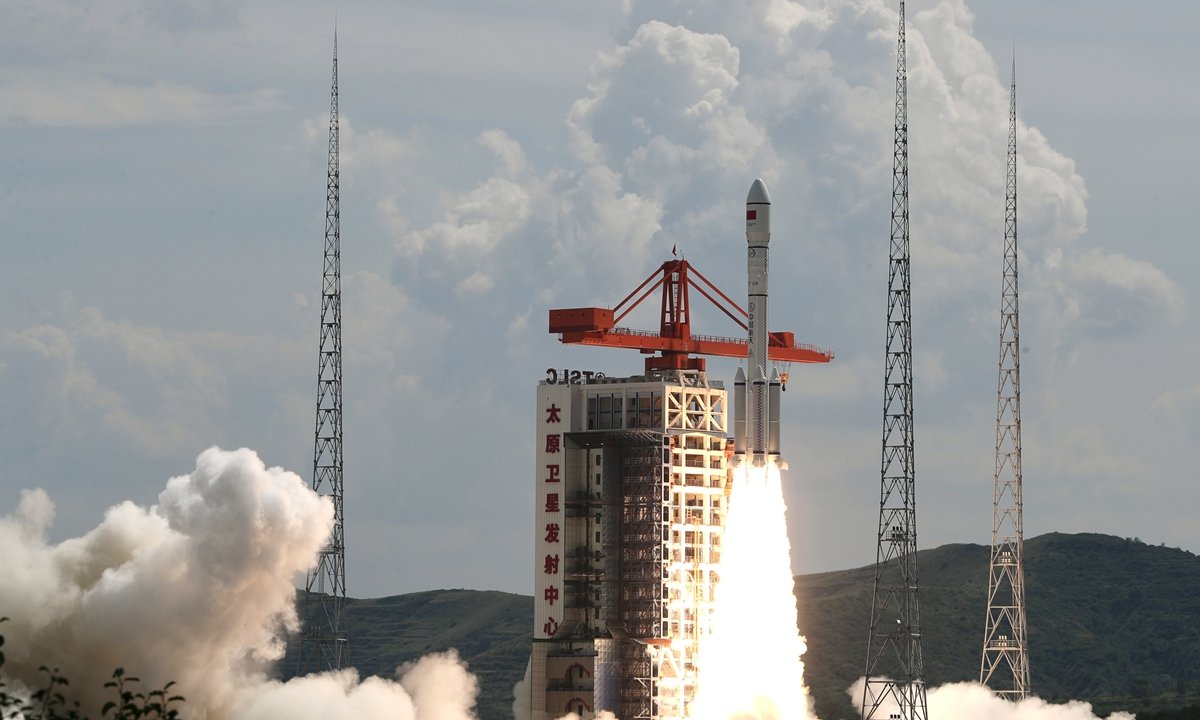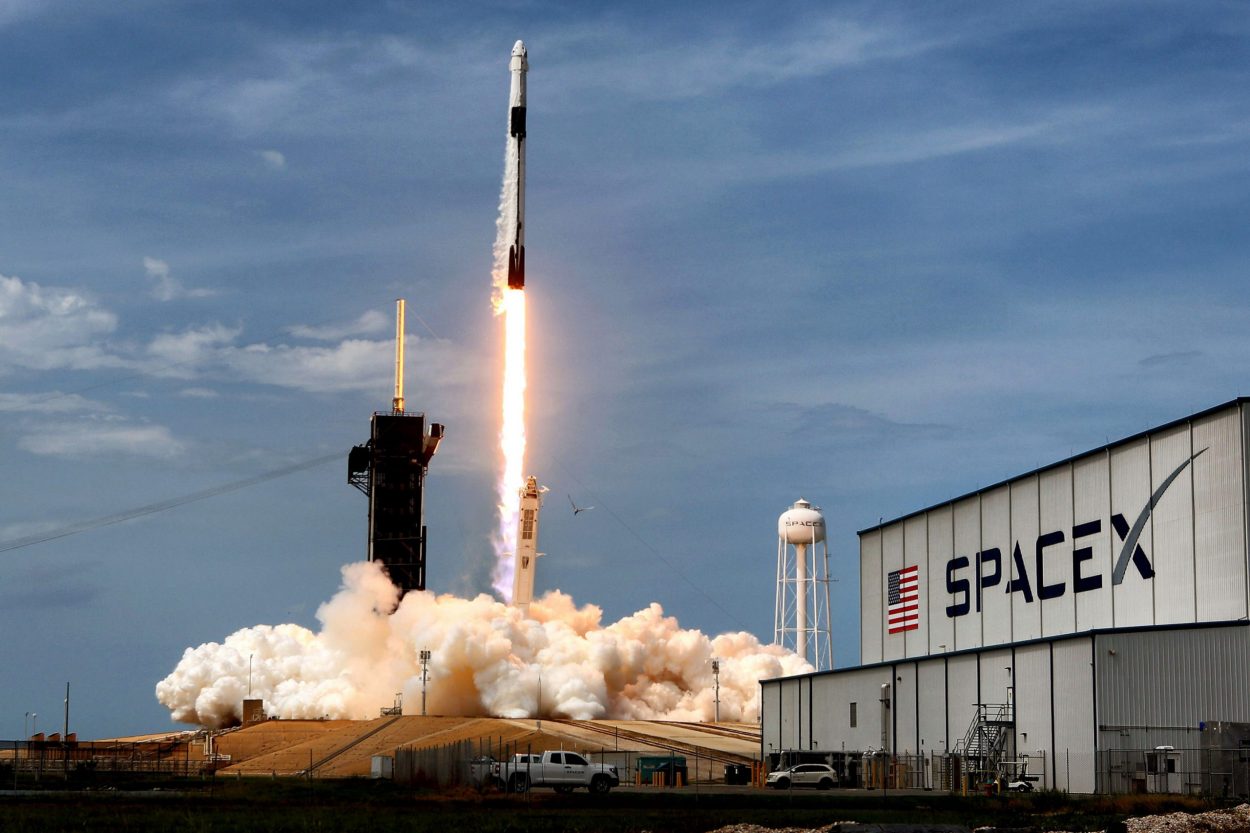As China ramps up satellite launches in an effort to develop its own version of the Starlink satellite network, the United States is faced with a new challenge: piles of space debris that would likely be generated in the process of releasing these satellites and the opacity surrounding such space trash.
The commander of the U.S. Space Command, Gen. Stephen N. Whiting, said he hopes Beijing will alert Washington the next time it launches a rocket that leaves behind persistent space debris instead of forcing the United States to figure out the orbital mess on its own.
Speaking last week at a forum in Colorado, General Stephen Whiting pointed to two instances in the previous two years where Chinese satellite launches left large amounts of trash in orbit.
“I hope next time there’s a rocket like that that leaves a lot of debris, it’s not our sensors that are the first to detect that, but we’re getting communications that help us to understand that, just like we communicate with others,” the Space Command chief said at an event organized by Mitchell Institute of Aerospace Studies.
The statement comes days after China sent the first batch of satellites for the Qianfan (China’s alternative to Starlink) project into orbit. On August 6, China successfully launched 18 Qianfan satellites into predetermined orbits using a Long March-6 carrier rocket from the Taiyuan Satellite Launch Center in Shanxi Province, North China.
The Qianfan mega-constellation project, also known as G60, was initiated last year to offer domestic customers more comprehensive and superior communication services.
According to some unknown sources cited by the Chinese state media, over 15,000 low-Earth orbit (LEO) wide-screen multimedia satellites are anticipated to be established in the future. This ambitious project aims to compete head-to-head with SpaceX’s Starlink and likely end American monopoly in that area.

The US Space Command stated that the first Qianfan satellites’ launch earlier this month formed a cloud of “over 300 pieces of trackable debris in low-Earth orbit.”
Not long after delivery, the launch vehicle’s top stage disintegrated. It was one of the largest rocket break-ups in history, with US space-tracking companies estimating the explosion caused around 700-900 fragments.
Whiting said that the mission was”overall successful” since the debris came from the rocket’s upper stage after the satellites were deployed. However, high altitude indicates that the debris will stay in orbit for a longer period of time. “We certainly don’t want to see that kind of debris,” added Whiting.
This is not the first time that China has left space debris.
According to General Whiting, there have been two instances in the last two years where Chinese satellite launches have left tons of trash in space. A previous NASA report observed that a similar incident occurred in November 2022 when another Long March 6A rocket broke apart in orbit, releasing over 530 pieces of trackable debris. The US notified Beijing about the space trash and “made available the vast majority of the tracking data that we have.”
General Whiting said that China had provided the US with notifications on a few occasions, which he referred to as a “positive move,” but noted that there were occasions where the United States was not informed.

Furthermore, satellites have been launched regularly using the Long March 6A rocket, a two-stage medium launch vehicle with four joined solid-fuel boosters and liquid-oxygen kerosene engines.
However, its alleged history of leaving behind junk has gained attention from all over the world since space debris raises the chance of accidents and jeopardizes the sustainability of space. The report noted that at least two major debris accidents have been confirmed by the Chinese Ministry of Foreign Affairs.
China had not responded to these comments at the time of writing this report. However, EurAsian Times understands that Beijing asserts that it is taking measures to mitigate space debris. Following the maiden launch of the Qianfan Constellation on August 14, Ministry spokesperson Lin Jian stated, “China has taken necessary measures and is closely monitoring relevant orbit areas and conducting data analysis.”
“We’ve made it a rule to always take space debris mitigation measures after satellites and carrier rockets complete their missions in order to help protect the environment of outer space and ensure the long-term sustainability of outer space activities,” the spokesperson had noted.
The US General’s call for monitoring China’s satellite launches and the space trash resulting from them comes as China has increased the frequency of satellite launches as it wants to build the enormous Qianfan Constellation and expand its network of low-Earth orbit satellites.

China’s Starlink Rival
China is anticipated to launch 108 satellites this year. By the end of 2025, it will have 648 satellites in orbit, enabling coverage of regional networks.
The constellation hopes to offer worldwide network coverage by 2027. Moreover, the network will have 15,000 satellites by 2030, providing integrated services such as direct mobile connections.
The network is projected as China’s answer to Starlink, SpaceX’s growing commercial broadband constellation. With more than 5,500 low-Earth orbit (LEO) satellites, Starlink provides almost global internet access to individuals, businesses, and governmental institutions. It is a division of SpaceX, which Elon Musk owns.
The project has reportedly been underway since 2016, although its cluster plans were only unveiled in 2021. The name “G60” is derived from the expressway of the same name that traverses multiple cities in the Yangtze River Delta region.
Kang Guohua, a senior member of the Chinese Society of Astronautics and a professor of Aerospace Engineering at Nanjing University, said earlier: “This will provide users with stable, high-speed internet services, especially in remote areas or regions with inadequate communication infrastructure, effectively bridging the digital gap.”
“In recent years, the achievements of SpaceX’s Starlink as a ‘disruptor’ in the internet communication industry have been widely recognized,” Kang told the official media, explaining China’s hasty decision to establish its own Starlink. China’s efforts in this area have started with the launch and networking of the Qianfan constellation.
Meanwhile, some analysts believe that China could use the satellite network to further its surveillance. According to an article in the Australian Strategic Policy Institute (ASPI), due to the centralized structure of satellite internet, countries may be more susceptible to cyber espionage by the Chinese government or other hostile entities.
- Contact the author at sakshi.tiwari9555 (at) gmail.com
- Follow EurAsian Times on Google News





